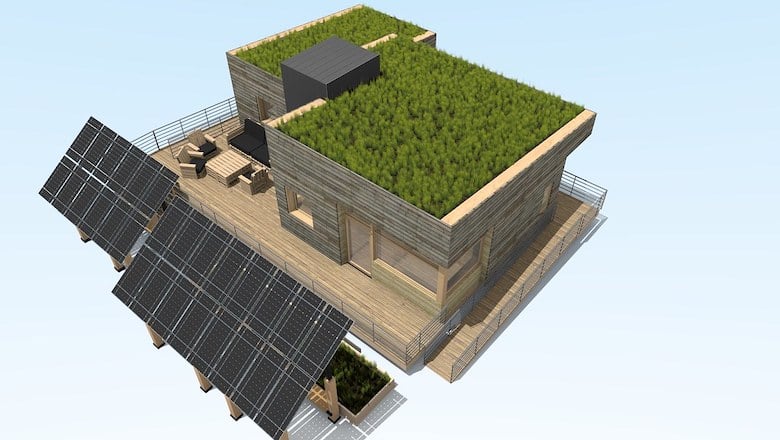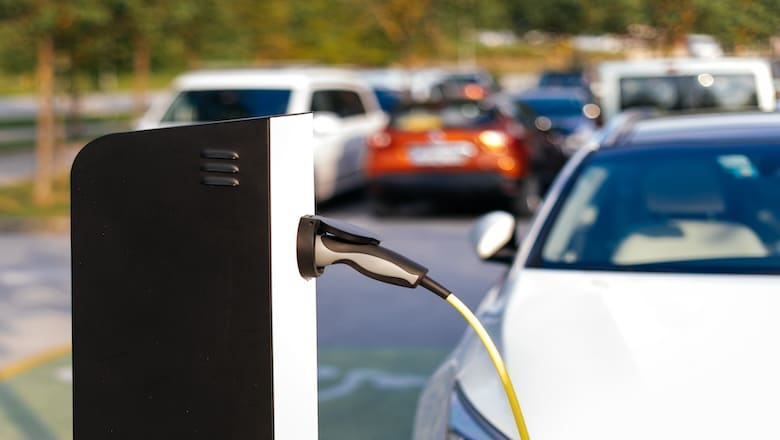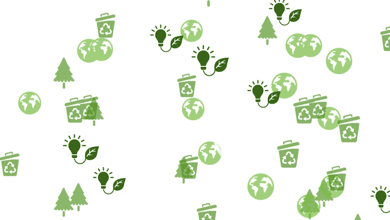Climate neutrality on college campuses: efforts, challenges, and solutions
From college presidents to the U.S. President, there is a growing drumbeat from leadership nationwide to address the climate crisis. The general consensus is that the path to mitigating climate change is clear: achieving climate neutrality. This article is a look at the current state of climate neutrality efforts, challenges, and solutions on college campuses.

In 2006, twelve college presidents came together and worked with several nonprofit organizations to develop the first American College & University Presidents’ Climate Commitment (ACUPCC). Now under the organizational support of Second Nature, there are currently 693 signatories to one or more of Second Nature’s four climate commitments: carbon, climate, Race to Zero, and resilience.
Another significant presidential commitment was published in January 2021, when the White House published an Executive Order on Tackling the Climate Crisis at Home and Abroad. President Biden sets an ambitious target for the country at large: “to put the United States on a path to achieve net-zero emissions, economy-wide, by no later than 2050.”
The climate crisis is real. And true to GreenerU’s belief that educational and community institutions are uniquely poised to lead the world in mitigating climate change, we also believe that achieving climate neutrality is the correct course of action. From a moral, innovational, educational, socially just, and environmental standpoint, making the shift to climate neutrality is a key component to any institution’s contribution to slowing the devastating effects of climate change.
The question is: how?
The challenges of achieving climate neutrality
Second Nature defines climate neutrality as having no net carbon (greenhouse gas) emissions. This is to be achieved by “minimizing carbon emissions as much as possible, and using carbon offsets or other measures to mitigate the remaining emissions.”
Greenhouse gas emissions are measured in three scopes: those which are generated on-site (Scope 1); those from purchased energy (Scope 2); and everything else, including travel, commuting, and embodied carbon from purchased materials (Scope 3).
Technically speaking, all three scopes have known strategies for offsetting or eliminating emissions. In a nutshell, strategies boil down to (a) reducing energy use through finding efficiencies, (b) supplying energy from renewables, and (c) offsetting the rest.
But as any sustainability professional is aware, there is no easy road to climate neutrality. Technical solutions abound, but the roadblocks are many: financing, institutional leadership, technical feasibility, politics, staffing and bandwidth, and stakeholder support are just a few.
A University of California report, “Overcoming Barriers to Climate Neutrality,” adds to the list: “The university’s coexisting models of centralized and decentralized decision-making may test our ability to move quickly to such an ambitious goal.”
Colleges that have achieved climate neutrality—and how
Based on our research, twelve higher education institutions have claimed carbon or climate neutrality (sources: Second Nature, earth911.com, and University Business).
Table. — Twelve schools’ self-reported strategies for achieving neutrality*
| School and source | Ø year | Efficiency | Renewables | Other |
| Colby College | | 2013 |
|
|
|
| Middlebury College | STARS GHG report | 2016 |
|
|
|
| American University | STARS GHG report | 2018 |
|
|
|
| Bowdoin College | STARS GHG report | 2018 |
|
|
|
| Bates College | STARS GHG report | 2019 |
|
|
|
| Colgate University | STARS GHG report | 2019 |
|
|
|
| University of San Francisco | (STARS report n/a) | 2019 |
|
|
|
| Dickinson College | STARS GHG report | 2020 |
|
|
|
| Colorado College | STARS GHG report | 2020 |
|
|
|
| Allegheny College | (STARS report n/a) | 2020 |
|
|
|
| School of the Art Institute of Chicago | (STARS report n/a) | 2020 |
|
|
|
| University of California Merced | STARS GHG report | 2018 |
|
|
|
* Schools had become climate or carbon neutrality signatories with Second Nature. Sources for table content are linked from the institution’s name; detailed STARS reporting data on greenhouse gas emissions is linked below that where available.
While it’s never possible to do an apples-to-apples comparison of institutions—each has its own unique size, geography, academic foci, and other individual features—the majority of schools in the table above are relatively small, private colleges unaffiliated with major research laboratories, medical schools, or other emissions-intensive operations. On average, larger technical universities have four times the carbon emissions per student than smaller, undergraduate institutions. Thus, there is a long road ahead to scaling solutions that have worked in these few locations.
Any institution that has achieved carbon or climate neutrality is to be applauded for their efforts. Not all solutions are created equal, however. Biomass or biofuels—such as wood, ethanol from corn, solid municipal waste, methane, etc.—can be carbon-neutral because the carbon capture involved in the growing process balances out the carbon emitted from burning it as fuel.
But there are a lot of caveats to this. Some research shows that the transition from growing crops for food production to biofuels, which is more economically attractive to many farmers, has accelerated the amount of carbon emissions from those sources at a faster pace than what crops could normally absorb. The U.S. EPA acknowledges additional drawbacks in its “Economics of Biofuels,” particularly increased water and air pollution, emissions from refineries, and losses in biodiversity with land expansion and some farming techniques.
And there’s another challenge. As originally reported in E&E News, “the difficulties are reflected in the fact that all of the institutions that say they are carbon neutral have achieved this goal by buying carbon offsets. While carbon offsets can support projects that reduce greenhouse emissions, that industry has received criticism over being used as the easy way out.”
The problem of buying offsets
MIT engineering professor Timothy Gutowski elaborates further on the conundrum of offsetting carbon. “The chief challenges to this solution are related to risk and a potential moral hazard. That is, the effectiveness of some schemes can be hard to confirm, and potentially could lead to mischief.” He goes on to describe how the idea behind pollution as a commodity to be bought and sold “may undermine the sense of shared responsibility that increased global cooperation requires.”
Rachel Kyte, dean of Tufts University’s Fletcher School and a climate advisor for the U.N. Secretary General, illustrates the limitations of carbon offsets in her opinion piece for the Washington Post: Shell Global “announced it’ll achieve net zero by 2050 in part by planting forests the size of Spain (while continuing to produce oil and increase its natural gas production).” Since there is only about 500 million hectares of land available for forest planting—ten percent for just one company—offsets can only go so far.
Thus, returning to Second Nature’s definition of achieving climate neutrality—by first “minimizing carbon emissions as much as possible”—it’s vital to consider all other avenues first and address the root of the problem of consumption. We have to tackle the creation of emissions.
Conclusion: there is no easy solution—but we can do better
As we published recently in “How to take a greenhouse gas emissions inventory,” getting an accounting of baseline emissions at your institution is the first step toward achieving climate neutrality. It’s up to each institution to decide what to measure, but the typical minimum will include Scopes 1 and 2 emissions baselining, which is usually accessible through existing records (utility bills and fleet data).
Solutions to reduce or eliminate Scopes 1 and 2 emissions are also usually technically feasible. Our website is full of examples of energy-efficiency solutions (see our Partners and Case Studies pages). These measures help alleviate demand; on- or off-site investments in renewable energy help clean up supply.
The most thorough accounting, however, will include Scope 3 emissions, which is the most challenging to calculate—work-related commuting and travel and purchasing are far more difficult to measure than the known quantities of electricity consumption, for example.
GreenerU client Portland Community College has tracked its Scopes 1, 2, and 3 emissions since its baseline year of 2006, and as of 2019, more than two-thirds of their multi-campus-wide emissions are from Scope 3 emissions. Of that, 57% of their Scope 3 emissions are attributed to commuting. Strategies to achieve their goal of a 20% reduction in their commuting-related emissions by 2026 include education, guidelines, and support for a college culture that reduces single-occupancy vehicle travel. That 20% reduction translates to 934 cars taken off the road, or avoiding 483,000 gallons of gasoline being burned.
Another GreenerU client, Swarthmore College, got approval from its Board of Managers in early 2021 to begin implementation of a $69 million Energy Master Plan that will help the school achieve carbon neutrality by 2035. The efforts will include decarbonization plans that convert the existing gas- and grid-powered electrical heating and cooling system to a more efficient, renewable electricity-powered system with heat recovery, battery storage, geothermal heat exchange, and more, eliminating 98% of Scopes 1 and 2 emissions on campus.
As emissions-reduction technologies continue to advance, new solutions abound, standards and policies tighten, and global commitments increase, we have an opportunity like no other to be part of the solution to the climate crisis. When colleges, universities, and community institutions lead the way, innovations, technologies, and inspiration will follow.
Let GreenerU help you navigate the steps to climate neutrality. Contact us today to get started.



